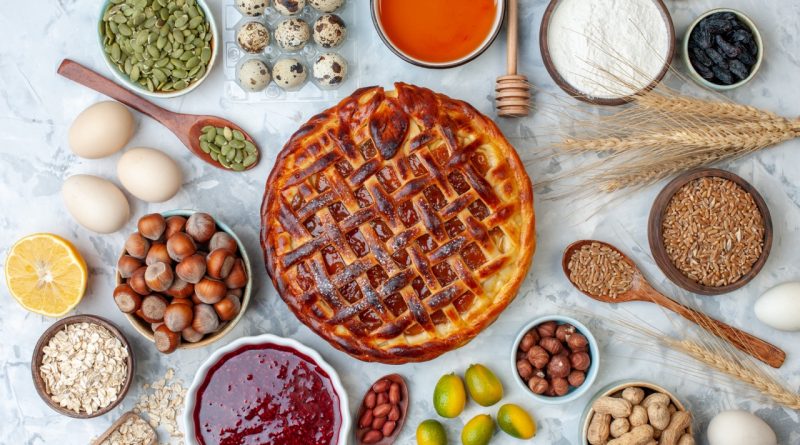How to Make the Best Homemade Garlic Bread
Garlic bread is a beloved side dish that complements various meals, from pasta to salads. Its delightful aroma and savory taste make it a staple in many households and restaurants. Making homemade garlic bread not only enhances your culinary skills but also allows you to customize flavors and textures to suit your palate. In this article, we will explore the essential ingredients, provide a detailed guide for preparing the garlic butter mixture, discuss the best types of bread to use, and share baking techniques that guarantee the perfect balance of crunchiness and tenderness.
Understanding the Ingredients for Perfect Garlic Bread
The foundation of exceptional garlic bread lies in its key ingredients. The primary element, of course, is garlic. Fresh garlic is preferred for its robust flavor, but garlic powder can be used as a convenient alternative. Freshly minced garlic will provide a strong punch of flavor that infuses the butter, while garlic powder offers a subtler taste. For those who prefer a milder garlic flavor, roasted garlic can be an excellent choice, as it has a sweet and nutty profile.
Butter is another critical component. Unsalted butter is typically used to allow for better control over the seasoning. It’s essential to soften the butter to room temperature, making it easier to blend with other ingredients. For an added depth of flavor, consider mixing in some olive oil, which not only enhances taste but also contributes to the desired crispness when baked.
Herbs and spices elevate the flavor profile of garlic bread. Common additions include fresh parsley, which adds a vibrant color and freshness, and Italian seasoning, which introduces a medley of flavors. Some recipes may also incorporate red pepper flakes for a touch of heat. Experimenting with different herbs, like thyme or oregano, can give your garlic bread a unique twist while complementing the main dish it accompanies.
Step-by-Step Guide: Preparing the Garlic Butter Mixture
To begin, gather your ingredients: softened butter, minced garlic, herbs, and any additional seasonings. Start by placing the softened butter in a mixing bowl. A fork or spatula can be used to blend the butter until it’s creamy and smooth, ensuring that it will easily spread on your bread. If you’re using olive oil, add it to the butter at this stage, mixing until fully incorporated.
Next, add your minced garlic to the butter mixture. The amount of garlic will depend on your personal preference, but a good rule of thumb is to use about 1-2 cloves for every half cup of butter. Follow this with any herbs you’ve chosen, such as freshly chopped parsley or dried Italian seasoning. Mix all the ingredients thoroughly, ensuring that your garlic butter is evenly flavored.
Finally, taste your garlic butter mixture and adjust the seasoning as necessary. You might want to add a pinch of salt or a bit of freshly cracked pepper for balance. Once you’re satisfied with the flavor, your garlic butter is ready to be slathered on your choice of bread, setting the stage for the perfect garlic bread experience.
Choosing the Right Bread for Your Garlic Bread Recipe
Selecting the right bread is crucial for achieving the ideal garlic bread texture and flavor. Traditional options include a French baguette or Italian ciabatta, both of which offer a delightful crust and soft interior. A baguette provides a crisp exterior that contrasts beautifully with the buttery garlic spread, while ciabatta’s airy texture allows for even absorption of flavors.
For a more rustic touch, consider using sourdough bread. Its unique tanginess adds an extra layer of flavor that can elevate your garlic bread to gourmet status. Additionally, the sturdy crust of sourdough gives a satisfying crunch when baked. If you prefer a softer garlic bread, a loaf of white sandwich bread or brioche can be used, though it may not deliver the same level of crispiness.
Lastly, if you’re looking for a healthier alternative, whole grain or artisan breads can be excellent choices. They often have a nutty flavor that pairs well with the garlic butter and can add nutritional benefits. Regardless of the bread you choose, make sure it’s fresh, as stale bread will not yield the same mouthwatering results.
Baking Techniques for Achieving Optimal Crispiness
Achieving the perfect balance of crunch and tenderness in garlic bread involves careful baking techniques. Preheating your oven is essential; a temperature of 400°F (200°C) is ideal for getting that golden-brown crust. If you have a baking stone, place it in the oven during preheating, as it helps create an even heat distribution, resulting in a beautifully crisp exterior.
When it comes to baking the garlic bread, there are two popular methods: wrapping in foil and baking uncovered. Wrapping garlic bread in foil for the first half of the baking process steams the bread, keeping it moist. After about 10 minutes, remove the foil to allow the top to crisp up. Alternatively, baking it uncovered from the beginning will lead to a drier texture but may produce a crispier finish.
Be sure to keep an eye on the garlic bread as it bakes, as ovens can vary. The goal is a beautifully golden color on the outside while ensuring the inside remains soft and flavorful. Once baked to perfection, let your garlic bread cool for a few minutes before slicing and serving, allowing the flavors to meld and the texture to stabilize.
Homemade garlic bread is a delightful addition to any meal, and by understanding the ingredients, mastering the preparation of garlic butter, selecting the right bread, and employing effective baking techniques, you can create the best version possible. Experimenting with flavors and textures can lead to a garlic bread that not only complements your dishes but also becomes a highlight of your dining experience. Follow this guide, and you’ll have delicious homemade garlic bread ready to impress your family and friends at your next gathering. Enjoy!
